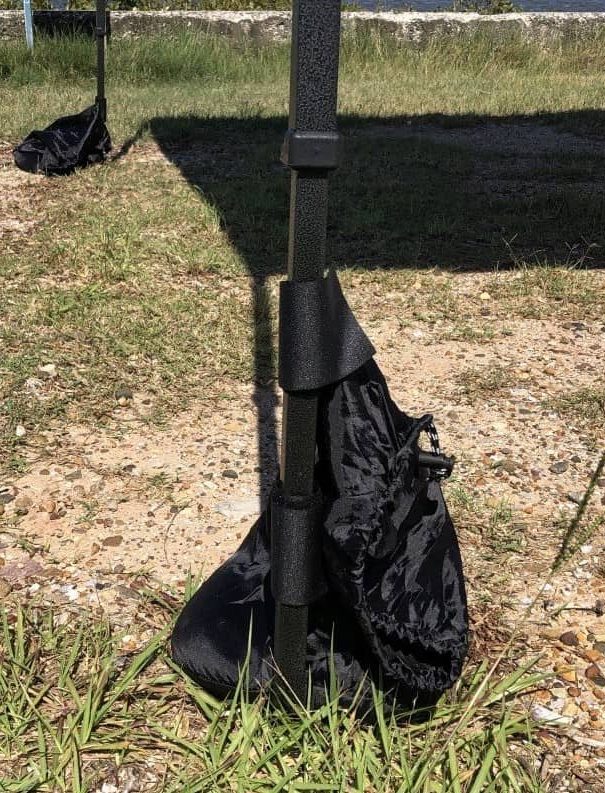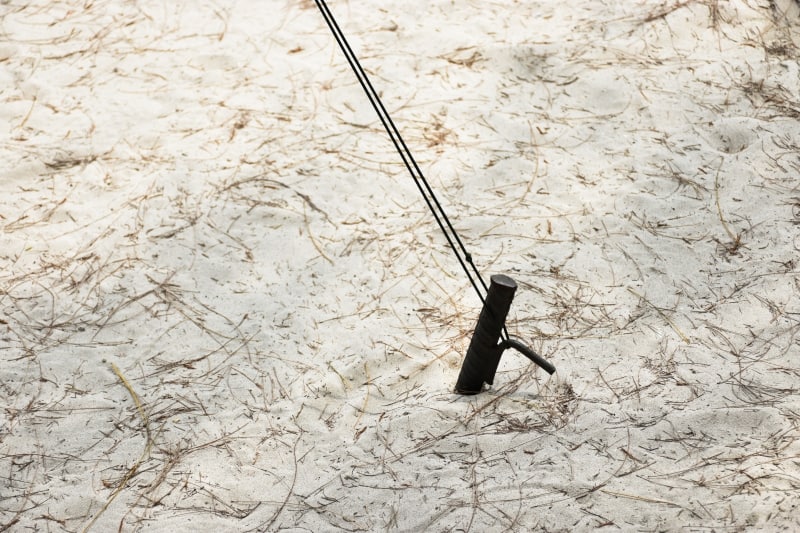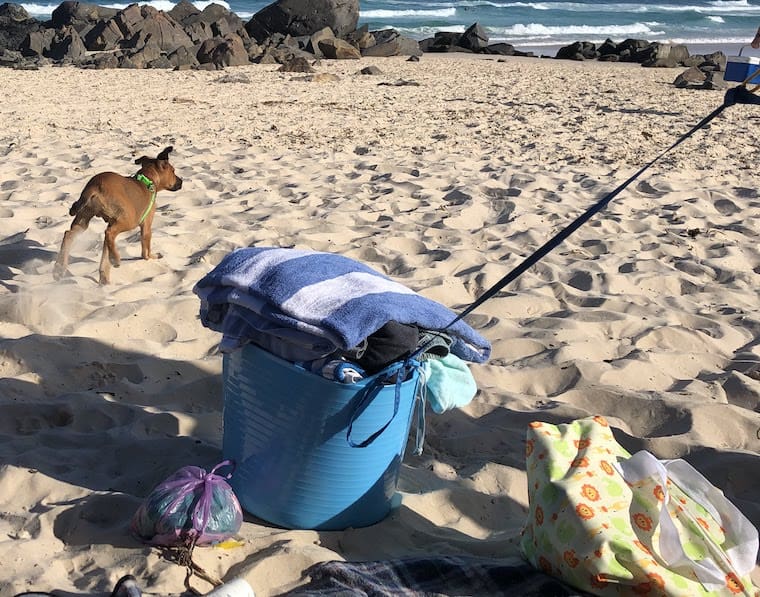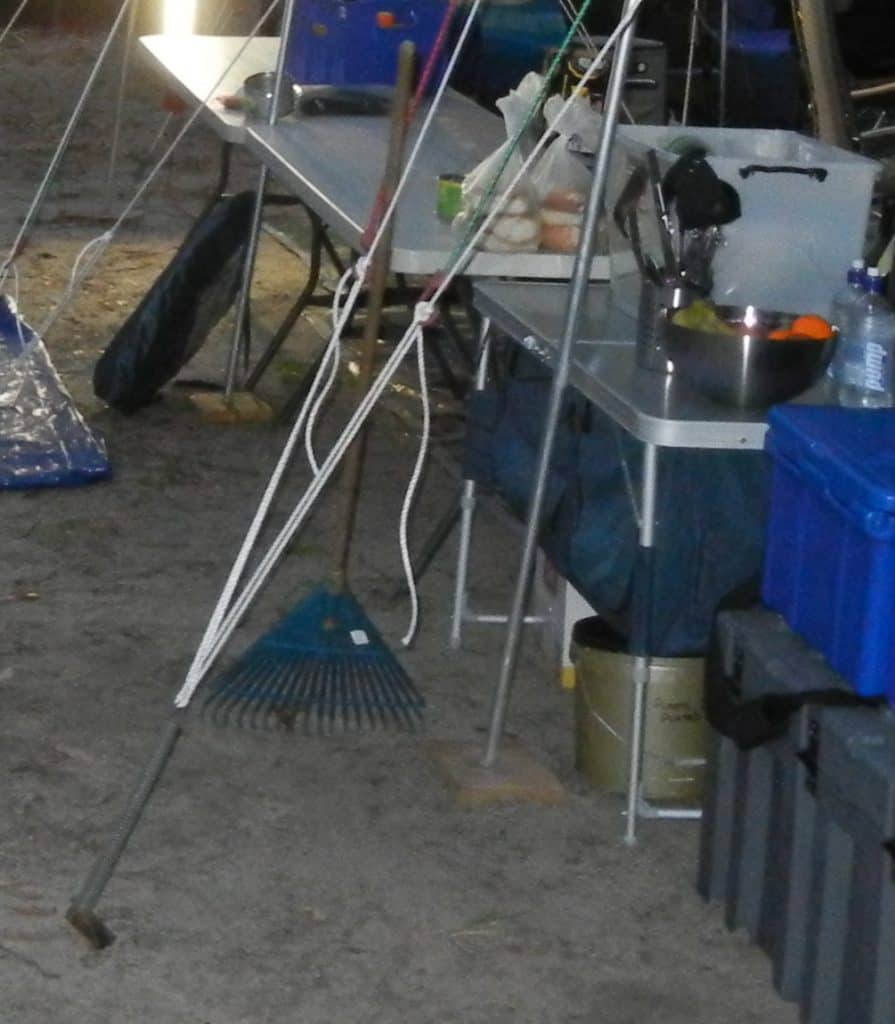How to Anchor Easy Tent Windy Beach
Canopies, especially at the beach, can turn into kites in an unexpected gust of wind (see the video at the end of this article for an amazing example). If no one has ever shown you how to anchor a canopy on the beach, it can appear to be more difficult than it is.
If there are any rules for using a canopy, it has to be – always secure it. Wind speed and direction can change on a whim, even on what seems like a calm day. It also really helps to invest in a canopy suited to beach conditions.
But what can you do when the tent pegs that came with your instant up canopy don't hold fast into the sand? Here are a few ideas to show you how to anchor a canopy on the beach.
Contents
- 1 Solution # 1: Weigh it down
- 1.1 How much weight do I need?
- 2 Solution # 2: Canopy anchor ideas
- 2.1 Beach tent stakes/pegs
- 2.2 Make your own DIY anchor
- 2.3 Tent-Tied?
- 2.4 Knots for tying down tents
- 3 Solution # 3: Want even more protection? Bury it…
- 4 What happens when you don't know how to anchor a canopy on the beach
Solution # 1: Weigh it down
It's as simple as it sounds…but there are some tricks. Some canopies have inbuilt pouches or pockets that you can fill with sand like the Cool Cabanas beach shelter. For pop up canopies like the E-Z Up Dome you will need to attach weights to the leg. You can buy purpose built refillable bags that attach to the legs of a canopy (see example photo below), or you could get creative and make your own DIY versions.

The other option is to Find containers that you can fill with sand and attach to the uprights of your canopy. These are a great option as they can be portable – you can just take empty bags with you and fill them with sand or rocks on location. If the bags have loops/handles you can also use them as anchor points to tie ropes to (see next section). Use a robust style of bag, like plastic grow bags, or alternatively make them out of PVC pipe segments. Double bag for extra strength.
You can purchase heavy metal weights that slide around the feet (you might have seen these around market stall canopies), but they are a pain to lug onto the beach.
How much weight do I need?
The size of bag will depend on how much resistance you need. Commercial bags typically store 20-25 pounds of sand. If you are making your own bags, using around a 5 gallon bag (about 12 pounds) would be a good start. Ensure you leave enough room in the bag to enable you to wrap the bag around the tent poles. Secure it in place with rope. Commercial weight bags will come with velcro or straps to secure the bag to the tent legs, but if you are DIY you can just wrap rope around the bag.
Solution # 2: Canopy anchor ideas
You can buy tent stakes/pegs to hammer into the earth, or make your own device that will anchor into the ground.

Beach tent stakes/pegs
There are a heap of different type of tent pegs that work best in sand. There are so many different designs, and everyone has their own personal preference. Most people tend to agree though that the generic metal tent pegs (often provided with your canopy) are great for soil, but won't cut it for loose sand. Beach stakes tend to be thicker than generic tent pegs, and have one of the following:
- a thread,
- a corkscrew-shape,
- a set of ridges,
- or a combination of these.
These designs provide extra surface area to boost friction in loose sediment, and therefore make it harder to be pulled out.
To use, simply bang the pegs straight into the ground at approximately 45 degree angle away from the canopy. For additional stability use two ropes that 'v' away from the canopy leg.
Make your own DIY anchor
Make your own beach anchor:
- Wood anchor
- Make 4 small round or square pieces of plywood or simlar. Size would depend on size and weight of what you're trying to tie down, but around 6-8 inches diameter.
- Drill small hole in center and run rope through the hole.
- Secure rope with knot to keep it from pulling through. Bury plywood a foot or so in the sand.
- Use what you have. Very often when you're at the beach you have a variety of containers at your disposal. Plastic utility tubs, cooler boxes (no sand in here, keep the beer!), buckets, spades etc. Here's a picture of a laundry tub we used to tie down on one of our beach trips.

Tent-Tied?
Now you need to secure the canopy to the anchor point. Some canopies come with guy ropes, or at least reinforced fastening points for you to attach your own rope. Otherwise you need to find a point to tie your ropes to on the canopy frame. This is best achieved by tying a knot around the frame, ideally at each corner along the horizontal truss bars. You could use a bowline knot to make a loop, and then feed the line back through. For a demonstration on view this video from the 34 second mark.
Knots for tying down tents
The ideal knot to tie down our guy lines needs to form an easily adjustable loop that jams under load. There are hundreds of candidate knot types, but the most popular is the "taut-line hitch". Have a look at the video below to see how to to tie this very useful knot. An interesting variation on this knot that makes it slightly more secure is called the midshipman's hitch.
If you're going to have the canopy up for a while, consider attaching springs. This little known tip allows for big tugs on the tent stake to be absorbed in the spring, and therefore not weakening the tent peg's hold. You need the right kind of spring as it can't be too loose or flimsy – the kind you find within spring trampolines work great (see photo below).

I would strongly recommend not using general bungee cords for tying down your canopy. You do see people using them and they seem like a convenient option, but they are risky for two reasons: they are often not rated for the strain/load involved with canopies, and if the hook ends slip they can end up in someone's eye. If you do use them make sure they are rated stretchy cords for tying down loads (not just for general use), and have closeable/lockable ends rather than just hooks.

Solution # 3: Want even more protection? Bury it…
Another option for extra stability that you can use in tandem with weight bags and stakes, is to bury the legs of your canopy in the sand. To be effective you need to bury each leg at least a foot. You can also bury your stakes/weight bags (tie a rope before burying…obviously) depending on their design.
If you are handy, bury some PVC pipe first to house the canopy legs within:
- Cut 4 lengths of 20″ long pipe, and make a 45 degree cut across one end (so it's pointed).
- After setting up your canopy, mark the leg positions in the sand, and move the canopy slightly to the side.
- On each of the marks, drive the pointed end of pipe at least a foot into the ground. Use a rubber mallet with a little block of wood between so as to not crack the PVC .
- You should be left with at least 1/2 the pipe sticking above ground, into which you can slot the legs of your canopy.
- Consider making some extra pipe segments, and take a couple for backup. These also make great fishing rod holders!
What happens when you don't know how to anchor a canopy on the beach
I leave you with an amazing and unlucky example of what can go wrong!
Source: https://escapedomain.com/how-to-anchor-a-canopy-on-the-beach/